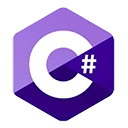Data types in C# define the kind of data that a variable can hold. This guide is aimed at beginners and will explain the most common data types in C# along with examples of their usage.
Common Data Types
C# provides several built-in data types, including:
int: Represents whole numbers, e.g.,42double: Represents double-precision floating-point numbers (decimals), e.g.,3.14string: Represents text, e.g.,"Hello, World!"bool: Represents boolean values, eithertrueorfalsechar: Represents a single character, e.g.,'A'
Example Usage
Here are some examples of how these data types are used in C#:
int age = 30; // Integer
double price = 19.99; // Double
string greeting = "Hello, World!"; // String
bool isTrue = true; // Boolean
char grade = 'A'; // Character
Conversion between Data Types
Sometimes, you may need to convert data from one data type to another. For example:
int integerNumber = 42;
double doubleNumber = (double)integerNumber; // Explicit conversion to double
Conclusion
Understanding data types is essential for programming in C#. You've learned about some of the most common data types and how to use them. As you continue your journey, you'll explore more advanced data types and learn how to manipulate data effectively.
Practice working with these data types in your C# code and explore more about data type conversions and complex data structures.

